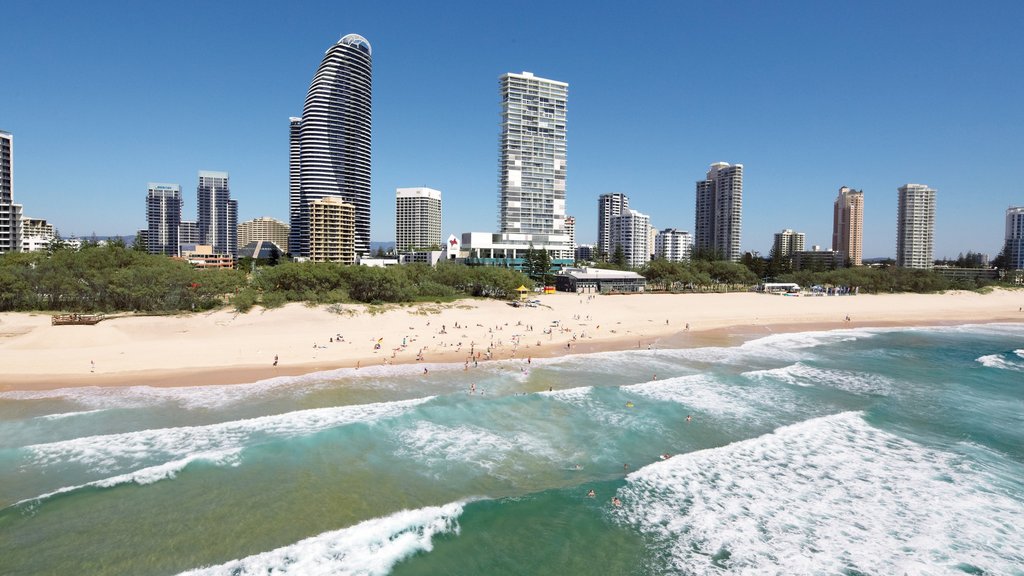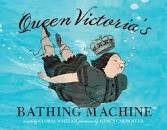
It’s only 7am, but already the beach is awash with bodies: walkers, joggers and surfers, canoes and paddle boards skim along the edge of the sea. The coffee shop is buzzing, and families are hoeing into enormous plates of eggs and bacon, bowls of chips, vast mugs of coffee. A family of Pacific Islanders are setting up camp on the lawn for a pre-Christmas picnic that promises to last till dusk. Toddlers skip between the tables. Tweenies are down on the sand kicking balls to their dads. Young teenagers are training with the surf lifesavers. An older man emerges from the waves and heads to his bike to ride home for breakfast. An elderly couple stroll gently along the promenade, another perch on towels on the dune. Young women in lycra, and clutching coffee cups, march along to the beat of a tune only they can hear. Young men are washing off their surfboards, already finished with their dawn surf. Every demographic is accounted for.
Surf lifesaving originated in Australia in 1907, and many other countries have adopted the idea since then. Volunteers patrol the beaches, trained to keep bathers safe from drowning by promoting water safety and providing surf rescue services.. Today, with around 190,000 members and 314 Surf Life Saving clubs across the country, Surf Life Saving Australia is a huge volunteer organization.
This morning, decked out in brightly visible yellow and red, the Broadbeach Lifesavers are gathered on the foreshore. Back by the dunes, their watch tower is decorated in Christmas baubles. While the Pacific Ocean is much warmer than our own Antarctic waters in the Spencer Gulf, the surf is much rougher, and I retreat to a coffee shop on the promenade to watch.
These days, people flock to beaches all over the world to swim and surf. Yet, swimming in the sea is a relatively new pastime, and only started becoming popular during the second half of the 18th century when it was suddenly proclaimed to be good for your health. In the UK, bathing at Brighton became popular under the patronage of the Prince of Wales, the future George IV. Of course, bikinis and lycra were non-existent back then, and both men and women were expected to be modestly covered to swim in woollen costumes that covered you up neck to ankle – presumably till they got wet!
Bathing Machines, something like a wooden caravan, were pulled into the water by horse or pushed in by muscly men, so one could enter the water discreetly. Women would change in the privacy of the bathing machine, then descend into the sea from the rear end so as not to be seen from the beach. A female ‘dipper’ would then hold them afloat, as few people could swim. Queen Victoria had her own bathing machine and personal dipper whenever she stayed at Osborne House on the isle of Wight, as Prince Albert was an ardent advocate for sea bathing.
Up on the thirtieth floor, we have heard the surf in our dreams, crashing along mile upon mile of white sandy beach. The horizon stretches forever, iced with soft, cotton-wool clouds. The sea is a cerulean blue frilled with white foam, the sun twinkling on its ruffled surface. People, like ants, scurry along the sand. Bodies in black wetsuits lurk a hundred metres out to sea, awaiting the perfect wave. Between the flags, swimmers launch themselves into the curling waves, rinsing out their sinuses. The breeze whispers in through the open doors, kissing my toes. We have no agenda, and I am perfectly happy with that. It is rare for us to live without a plan, or at least some idea of what the day ahead may look like.
Back in Brisbane, we board a river cat (catamaran ferry), and spend the late afternoon buzzing along the Brisbane River from West End to Hamilton and back again. It’s a great way to see the city, at the tiny price of public transport for a three hour cruise. Peckish and chilled, we disembark at Hamilton to check out Eat Street. The riverside is chock-a-block with families decked out in Christmas attire and waiting for the fireworks show. Eat Street has been created on a disused wharf beside the Brisbane River. Covering several hectares, the stalls have been built from recycled shipping containers. Almost two hundred of them. We wander past a variety of food stalls offering a taste of cuisines from around the globe, before settling on a Mee Goreng and some spring rolls. Then its off to watch the fireworks before boarding the ferry back to the city with a boat full of sleepy kids.

